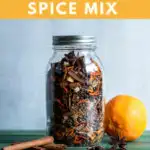
I tolerate summer.
It seems to be everyone’s favorite season. But as someone who is perpetually too hot, summer is not kind to me. The season I love best is described with a four-letter word – snow.
Don’t get me wrong; there are many great things about summer, particularly the amazing vegetables coming out of my garden.
But winter is my season. I love the cold.
When the temperatures drop, and the wind begins to blow, there’s an almost audible ‘click’ from my brain.
It’s a switch toggling from cold to hot.
Where, in summer, I couldn’t get enough fresh salad, and I was drinking gallons of homemade herbal iced tea, suddenly I find myself making butternut squash soup and pouring yet another cup of hot tea.
Gone are the pretty, drinking glasses of summer. My dish drainer becomes an ode to my favorite mugs.
It’s around this time that I make up a large batch of mulling spice mix. My custom blend lives in a jar on my counter, where it’s opened frequently as I heat a batch of mulled cider, mulled wine, or mulled mead all through the winter.
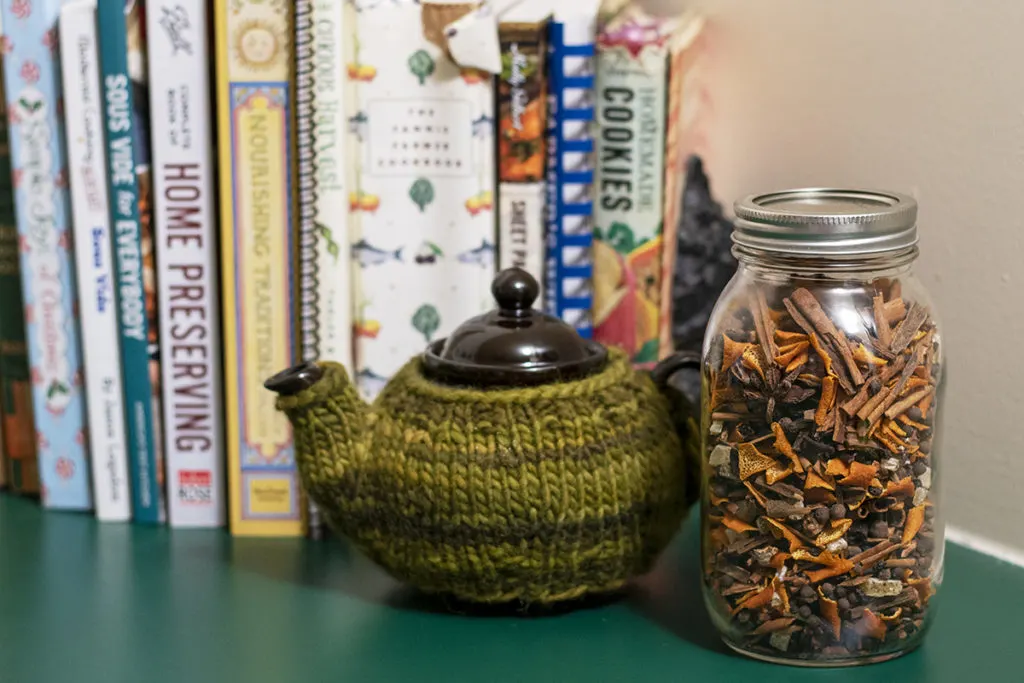
My kiddos, who are huge apple cider fans, rarely drink cold apple cider once we hit December. Not when delicious, hot mulled cider is only a, “Pleeeeeeeeease mom,” away.
I used to buy cartons of this horrible “mulling spice mix.” It came in traditional and orange flavors. You should always be suspicious of something with “flavor” and a real food in the name. It was a powdered mix loaded with sugar, and it made for a rather cloying drink in the end.
I finally wised up and figured out that making mulling spice was cheaper than buying a mix.
And I could skip all the added sugar. Not to mention I could tinker with what went in it.
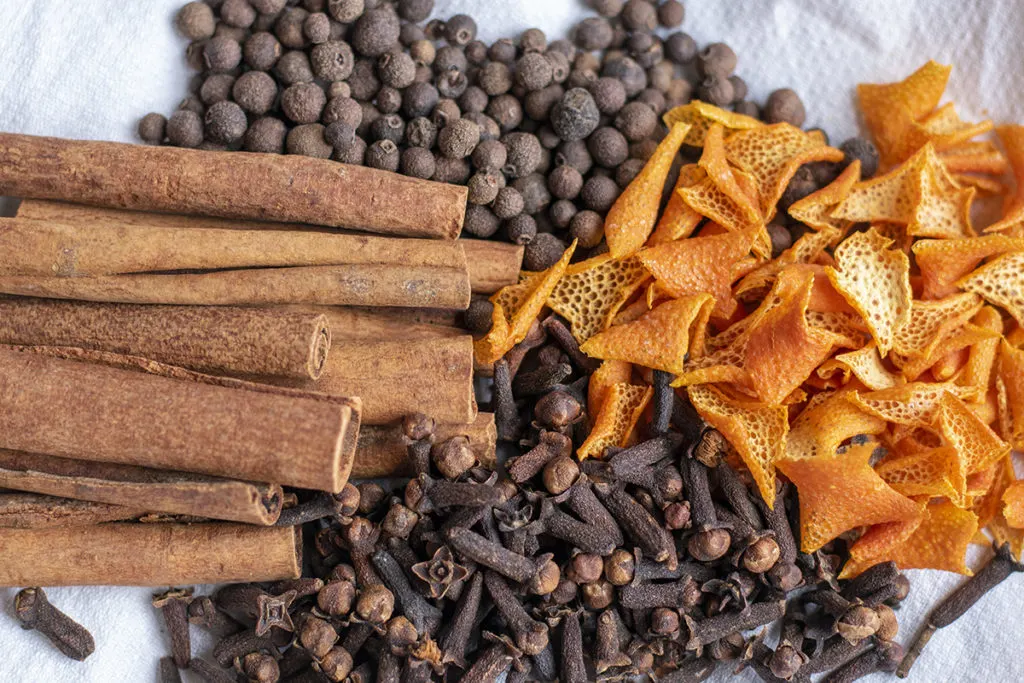
The base for nearly all mulling spices consists of cinnamon, cloves, allspice, and dried orange peel. These are all things that are easy to get your hands on.
Mulling wine and cider is a worldwide love affair. And there are many variations on mulling spices depending on what part of the world you come from.
It’s easy to customize a mulling spice blend you and your family love.
Beyond the traditional spices, you can try adding any of these to your mulling spice mix.
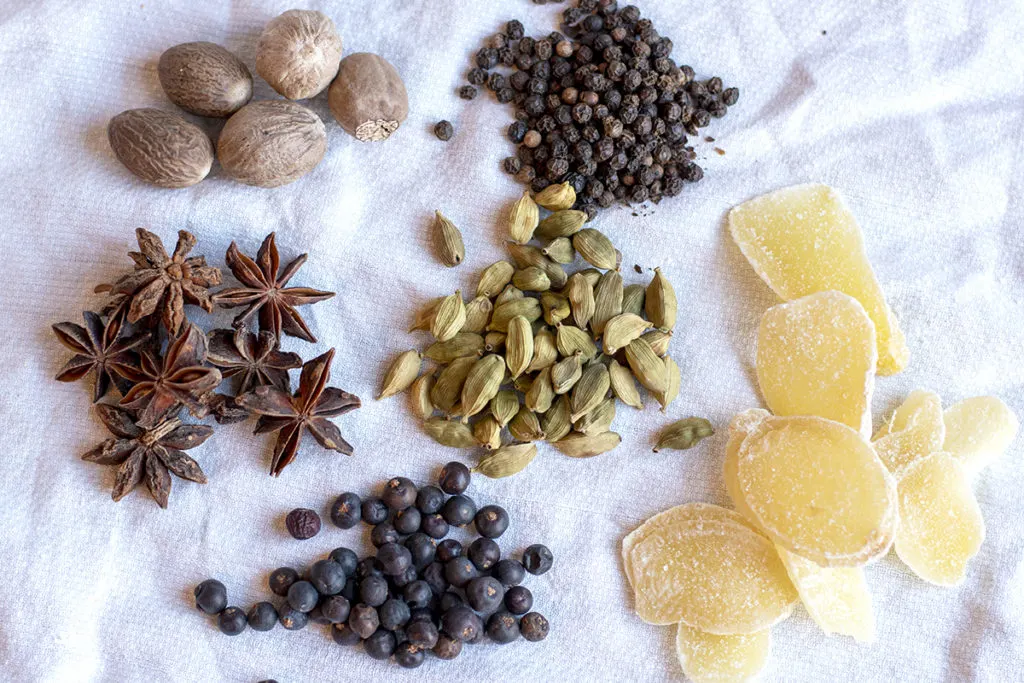
- Juniper
- Peppercorns
- Dried ginger slices
- Dried lemon peel
- Nutmeg
- Star anise
- Cardamom
Using Whole Spices Rather Than Ground
Most of us already have these spices in ground form, but it’s best to use whole spices. Ground spices won’t dissolve in the drink, so you end up with sludge at the bottom of the pan that often gets poured into your serving cups. This leads to some unpleasant sips towards the end of your drink.
Crushing Cinnamon Sticks and Whole Nutmeg
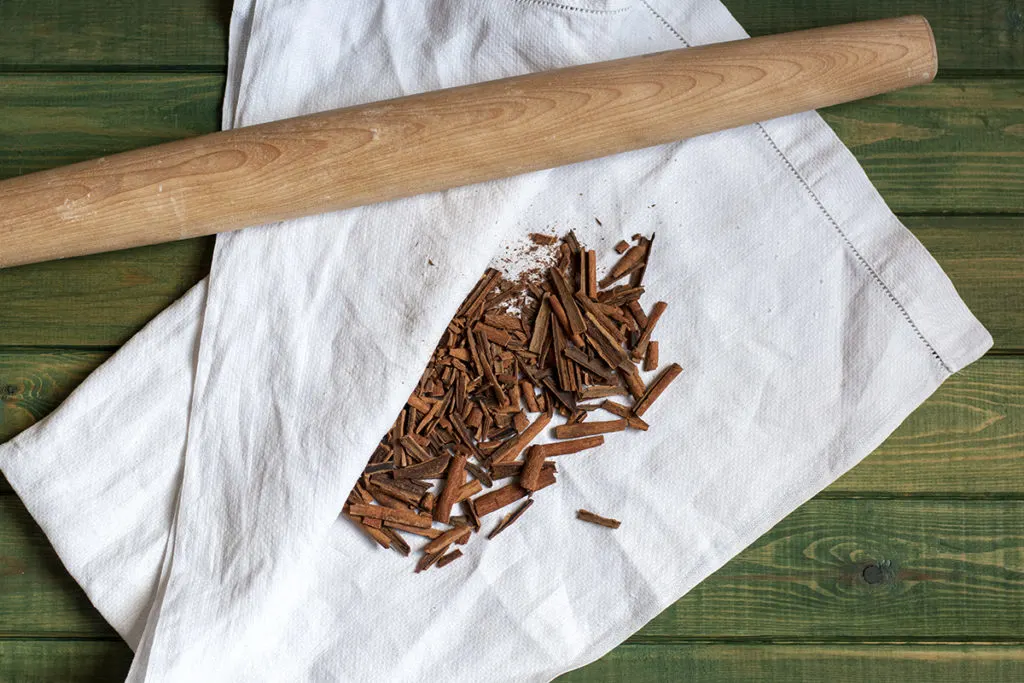
For the most part, these spices should be used in their whole form. However, to make it easier to mix a batch that will fit in a jar, I suggest you crush your cinnamon sticks and nutmeg first.
I’ve seen it suggested that you place cinnamon sticks and whole nutmeg in plastic zip-top freezer bags for this step. Goodness knows there’s no need to use yet another piece of single-use plastic here.
Instead, place your cinnamon and nutmeg between the layers of a clean, doubled-up kitchen towel.
Now, whack the crap out of that thing with a rolling pin, small cast iron pan, or meat tenderizer. (This is the stress-relieving portion of cooking for today.)
Making Your Own Dried Orange Peel
Yes, you can use the stuff from the grocery store, but making your own is super easy. Using the freshest and best ingredients you can, always results in better flavor. The most labor-intensive part is peeling the oranges, and that’s not hard. Give it a try; you’ll be pleased with the results. (And your hands will smell amazing.)
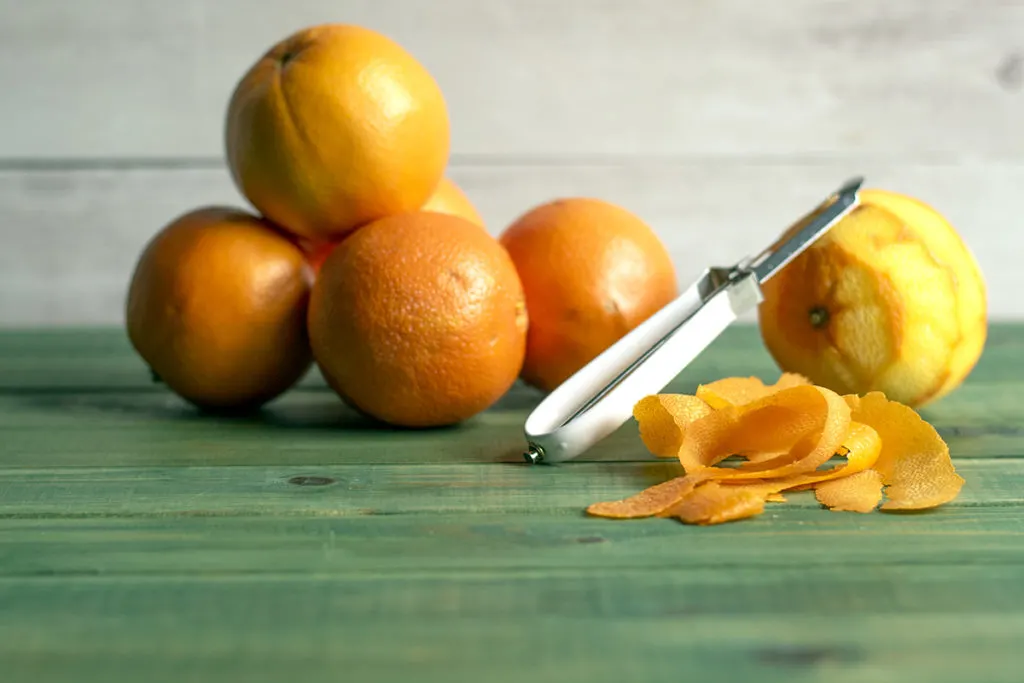
- Pour boiling water over six oranges, then scrub clean using a soft-bristled brush under cool running water. Dry the oranges thoroughly.
- Using a sharp vegetable peeler, remove the outermost layer of peel. Be careful not to peel the white pith as well. This part of citrus fruit is very bitter.
- Tear the peels into one centimeter-ish squares and place them on a baking sheet.
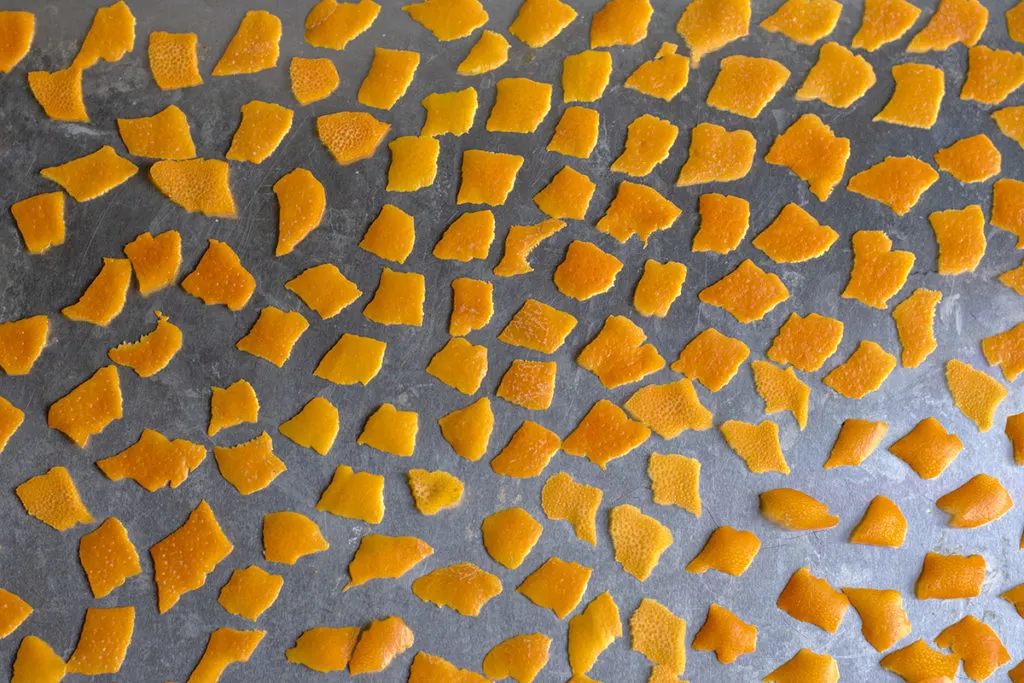
- Dry the peels in your oven at 170 degrees F for about 45 minutes. Turn the oven off and let the peels cool completely.
- Once the peels are cool, they should crack easily. You can keep them as is or crush them into a smaller size if needed. (For mulling spices, I keep them as is. Crushing the pieces leads to all of the tiny bits ending up on the bottom of the jar.)
Six medium-sized navel oranges will give you roughly ¾ to 1 cup of dried orange peels. Store your peels in an airtight jar.
Use those peeled oranges to start a batch of fermented cranberry sauce or a gallon of sparkling hard Christmas cider.
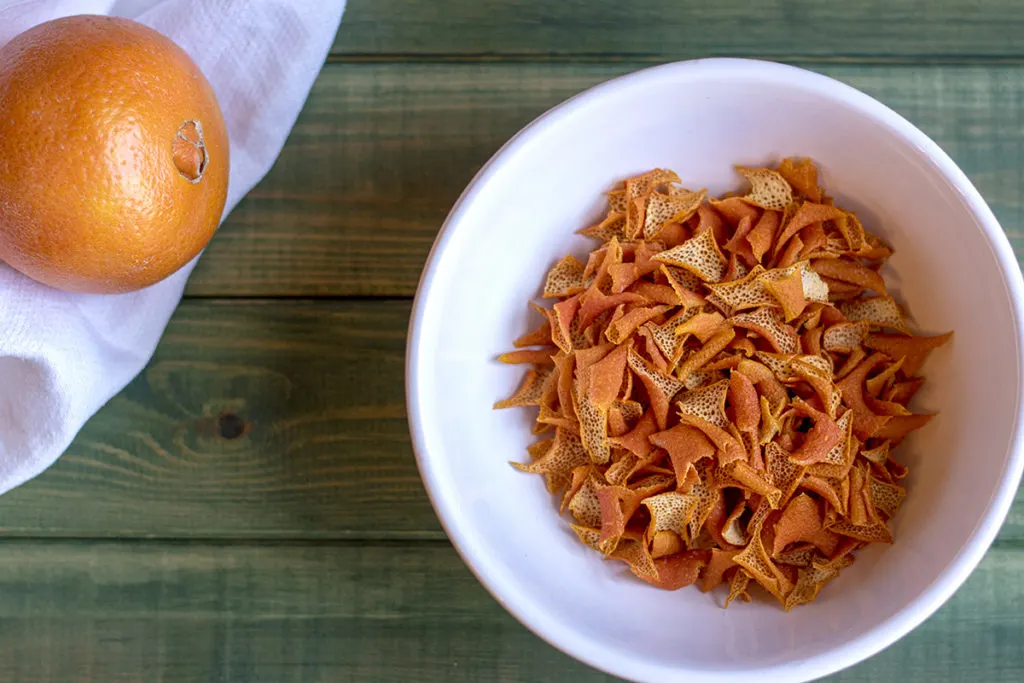
Mixing a Mulling Spice Blend
Of course, making the actual spice blend is as simple as pouring the spices in a bowl and mixing them well with your hands.
Store the mulling spice in a jar and use it as needed.
Or make mulling spice sachets.
These are great because you don’t have to strain your finished drink.
These lovely sachets make a wonderful gift too. Give a jelly jar full of mulling spice sachets to friends and family for Christmas. Or make up a bunch to give as favors.
(If you plan on making a large batch for gift giving, I highly recommend this three-pack of spices to get you going.
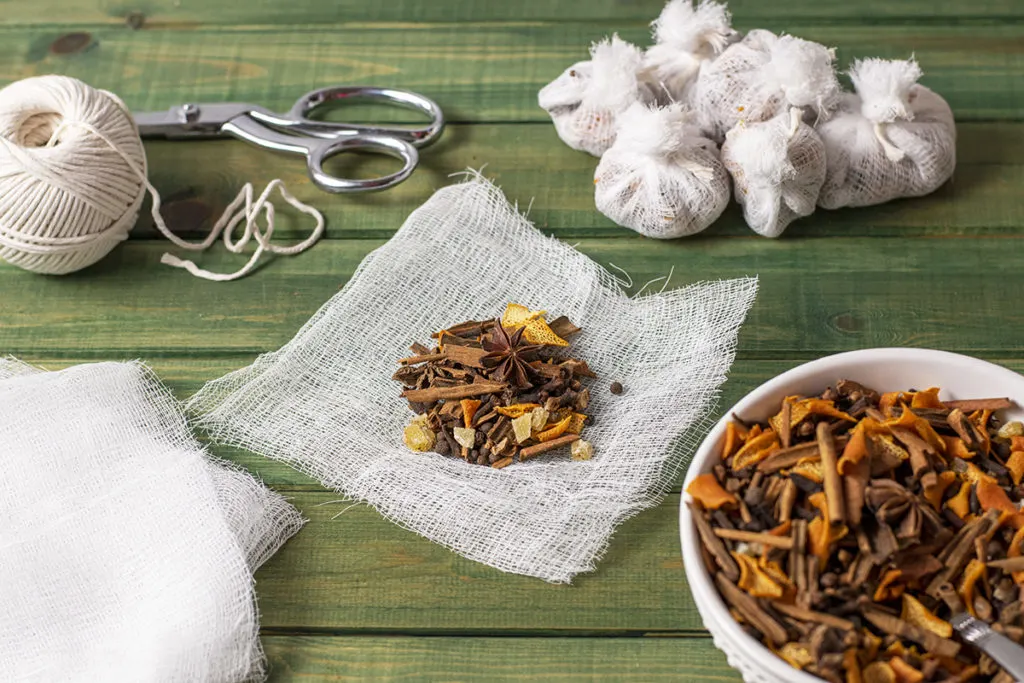
Cut triple-layered cheesecloth into 6”x6” squares and put two-tablespoons of mulling spice in the square. Gather the edges and tie the sachet tightly with a length of cotton butcher’s string. Store the sachets in an airtight jar.
One sachet is used per bottle of wine or half-gallon of cider.
On to the mulling mixes!
Basic Recipe
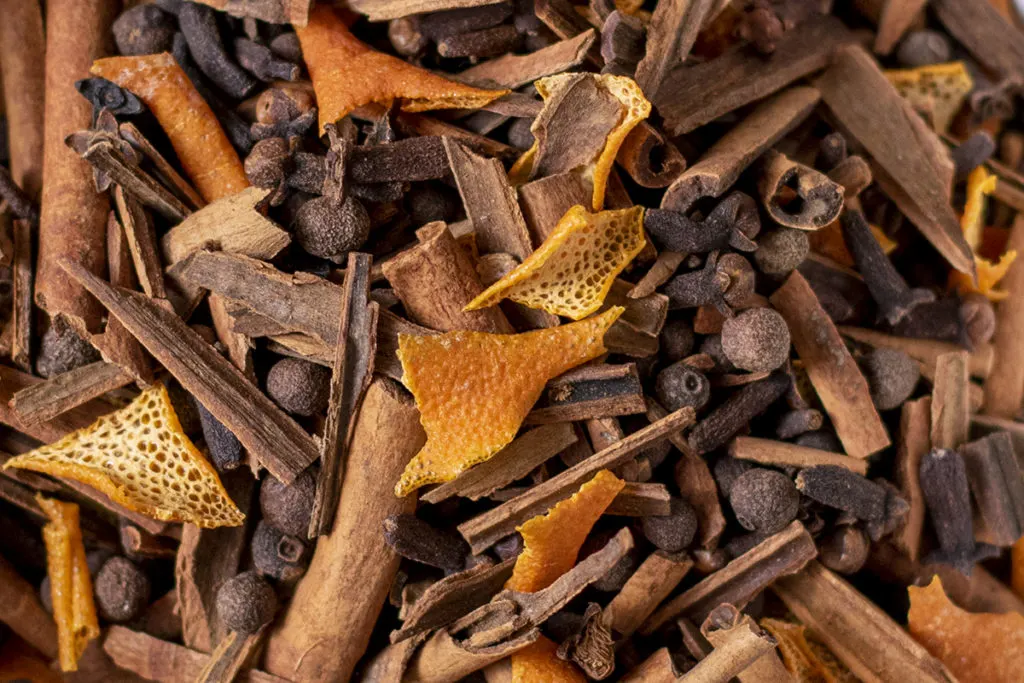
This is a very basic mulling spice recipe that gives you a classic mulled flavor profile. It’s great on its own or as a place to start customizing.
Mix the following spices in a bowl.
- 18 3” cinnamon sticks, or roughly 85g
- 1/3 cup dried orange peel
- ¼ cup whole allspice berries
- ¼ cup whole cloves
My Custom Blend
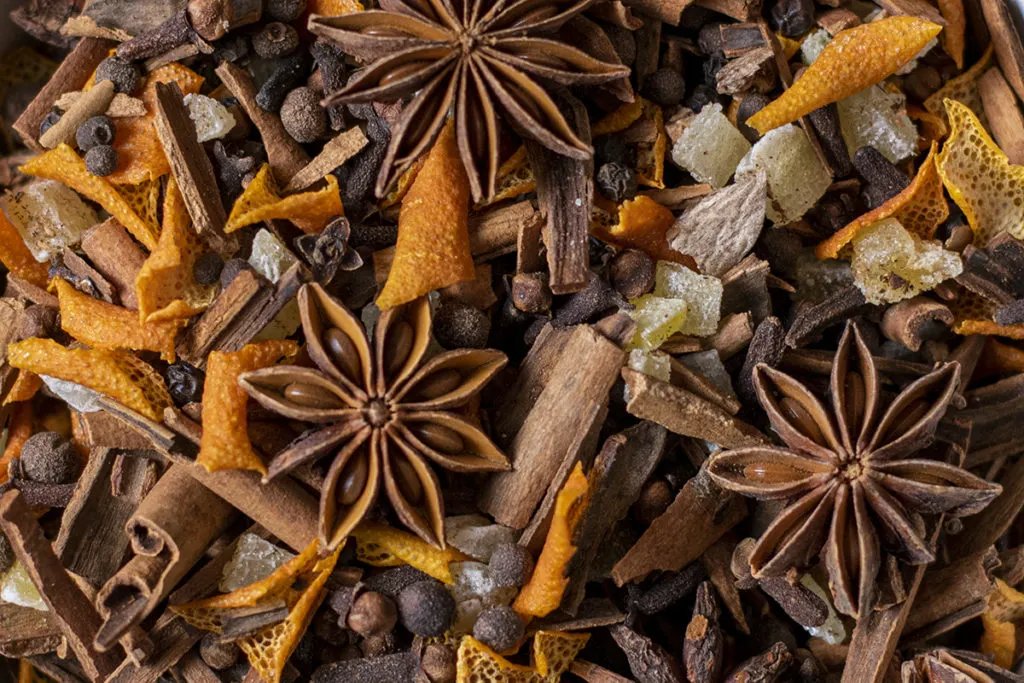
This is the blend I use and love. I developed it after trying several different recipes and noting what I liked, what was awful, what was too strong, and what wasn’t strong enough. I hope you love it too.
This will make up enough to fill a quart jar. Mix the following spices in a bowl.
- 18 3” cinnamon sticks, or roughly 85g
- ¼ cup whole allspice berries
- ¼ cup whole cloves
- 1/2 cup dried orange peel
- ¼ cup black peppercorns
- 15 whole star anise
- 3 tablespoons of roughly chopped ginger slices (the sugared kind)
Now that you’ve made these wonderfully fragrant mulling spices let’s make something delicious to drink.
Hot Mulled Cider
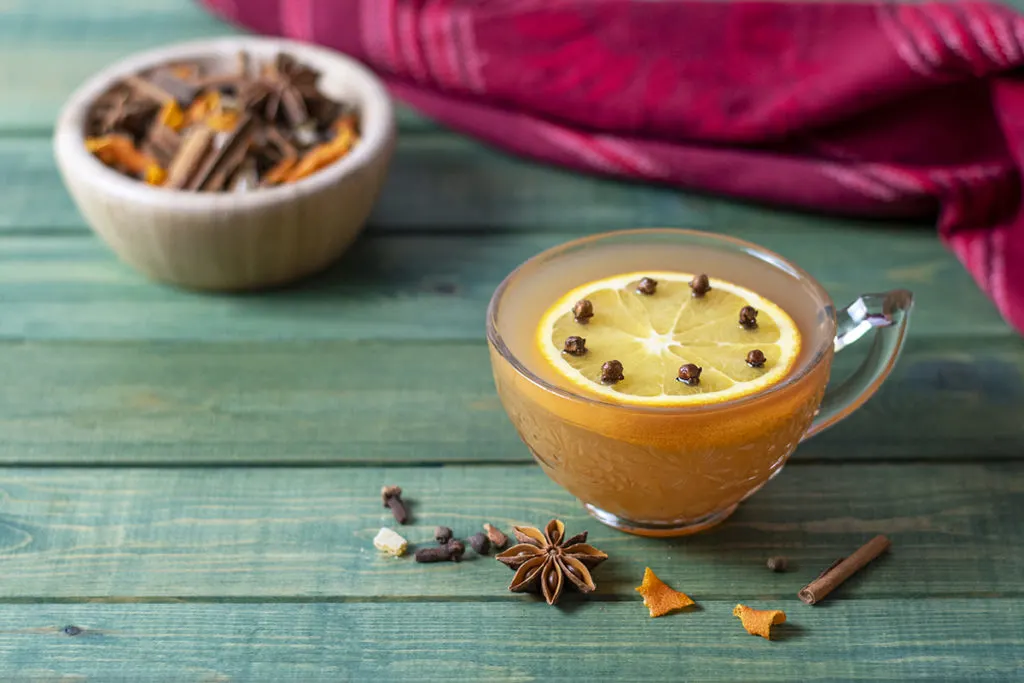
This classic drink calls to mind warm mugs and happy holidays. Welcome family members in from a day of snowy play with a hot mug of this spiced drink.
Use two tablespoons of mulling spices per half-gallon.
In a large saucepan, bring the cider and the spices to a gentle simmer over medium heat. Reduce the heat to low and cover the pan. Simmer for half an hour up to three hours.
The longer you simmer the cider, the more potent the spices become.
For a boost of orange, slice an orange and add the slices into cider as you heat it.
When you’re ready to serve the mulled cider, strain it to remove the spices, or discard the sachet if one was used.
Hot Mulled Wine
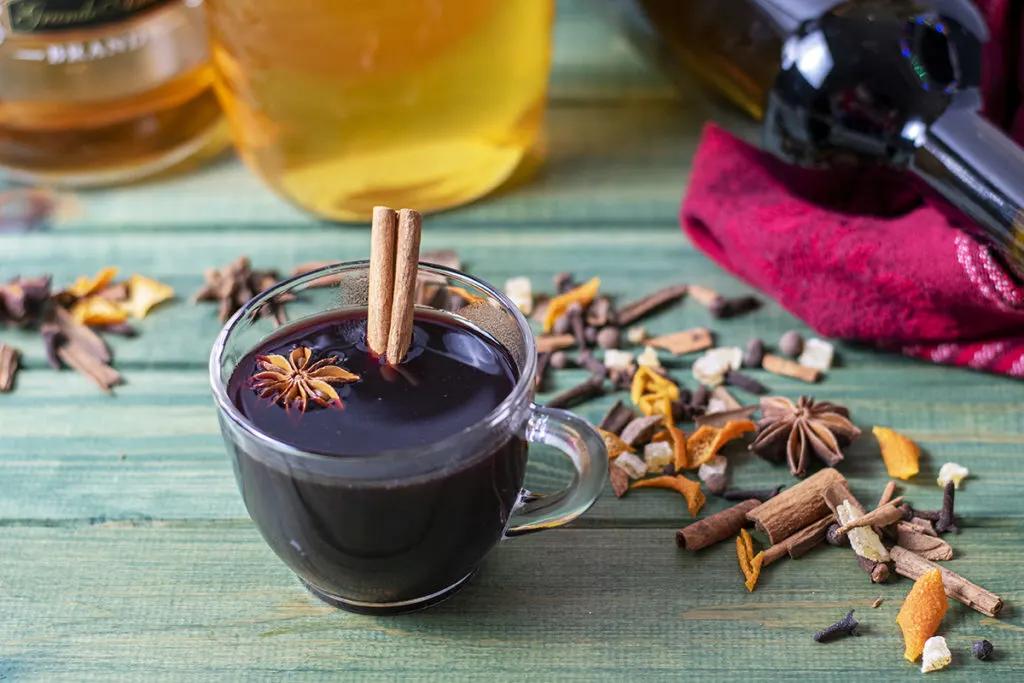
Mulled wine is a cold-weather standard if you live where there is snow. And it’s a great way to use a cheap bottle of red wine.
That’s the point of mulling spices in the first place. Those good old party animals, the Greeks, wouldn’t dare let any wine go to waste, not even subpar, “meh” wine. They added spices and warmed it to make it palatable. And centuries later, we’re still doing it.
Take your bottle of Three Buck Chuck to new levels of greatness!
Seriously though, you want an inexpensive dry red wine. Don’t spend more than $15.
Mulled wine is also sweetened, and ‘fortified’ with brandy. You can use sugar, honey, or maple syrup to sweeten the drink. 3-4 tablespoons of the sweetener is used to taste, and a ¼ cup of brandy is added at the end.
Use two tablespoons of mulling spices per bottle of wine (750ml).
In a large saucepan, bring the bottle of wine, mulling spices, and sweetener of your choice to a simmer over medium heat. You don’t want it to bubble as it will boil off the alcohol. As soon as the wine begins to simmer, reduce the heat to low, cover, and simmer for half an hour up to three hours.
When you’re ready to serve the mulled wine, remove it from the heat and strain the wine or discard the sachet if one was used. Stir in the brandy and taste the finished mulled wine. Add additional sweetener if desired. Serve hot in mugs.
Hot Mulled Mead
For mulled mead, do the same as for mulled wine, substituting mead for red wine. If you’re using a sweet mead, skip the sweetener.
Mulling with a Slow Cooker
My favorite way of mulling anything is with a slow cooker. The house will smell amazing, and I’ve found it’s the easiest way to serve mulled beverages at parties. Guests can simply help themselves.
Always set the slow cooker to low and start your drink at least three hours before you wish to serve it. Add ingredients in the same manner as noted in the recipes above. Put the lid on, and enjoy the wonderful aroma.
Mulled Wine Gift Basket
For an easy but thoughtful gift idea, put together a mulled wine basket. Include a bottle of wine or mead, a taster size of brandy, a sachet of mulling spices, and a couple of mugs. I’m a huge fan of getting baskets and kitschy Christmas mugs from thrift stores. Tuck in a festive kitchen towel, and voila!
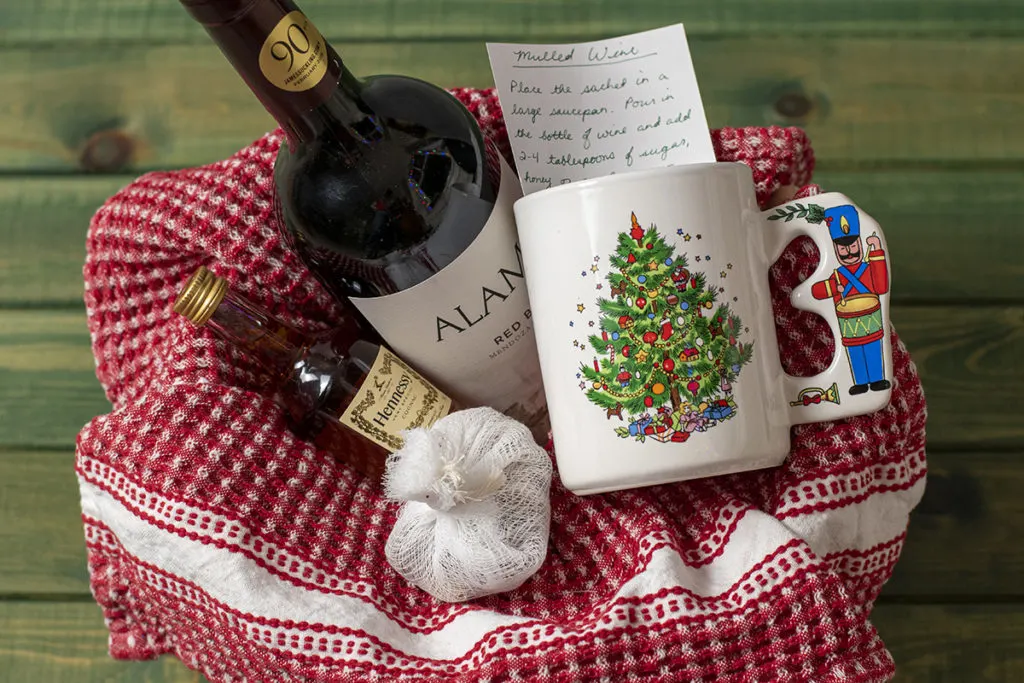
Don’t forget to write directions on a notecard to tuck in the basket.
It’s one thing to give someone a sachet of mulling spices; it’s another to be gifted everything you need to use that sachet all tucked in a lovely basket.
Now that you’ve got a jar of mulling spices ready to go, bring on the cold, snowy weather. As the song goes, “Let it snow, let it snow, let it snow.”
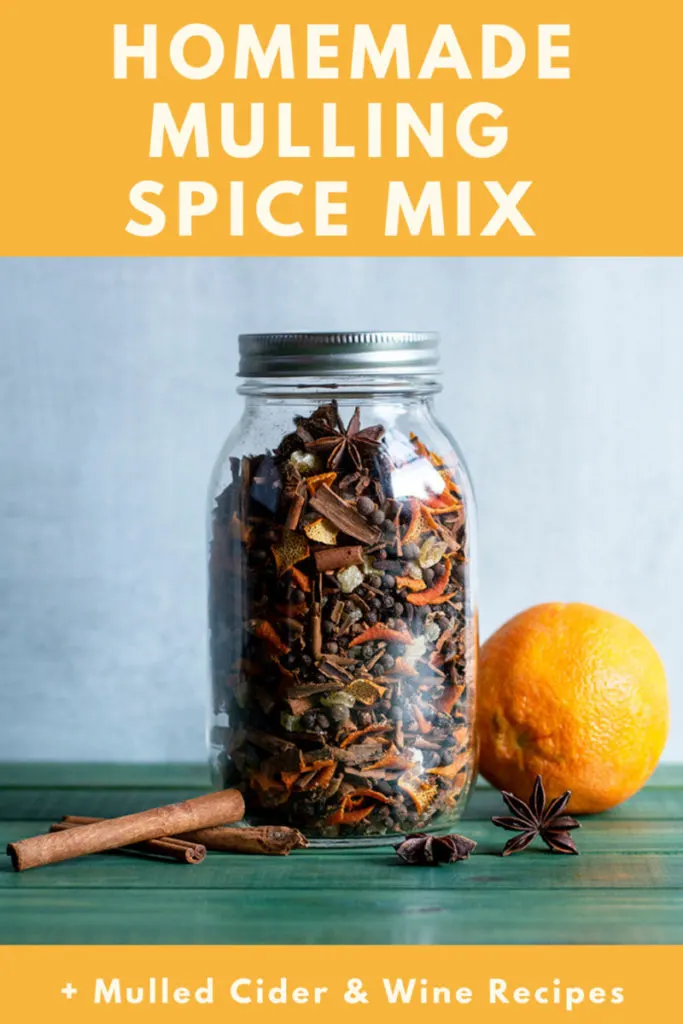

Get the famous Rural Sprout newsletter delivered to your inbox.
Including Sunday ramblings from our editor, Tracey, as well as “What’s Up Wednesday” our roundup of what’s in season and new article updates and alerts.


